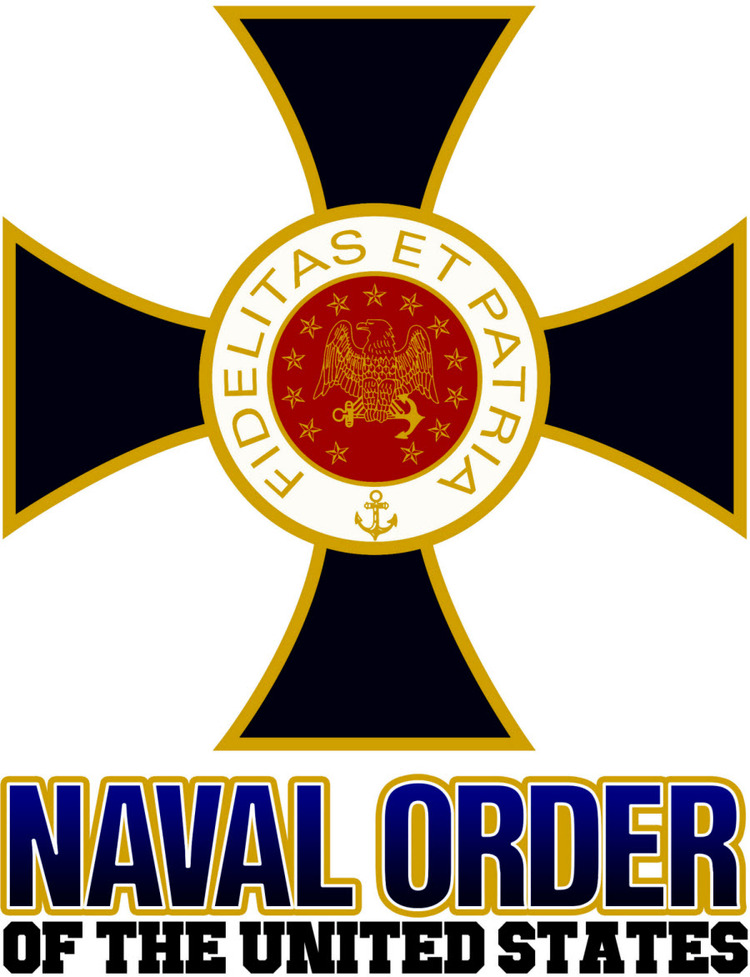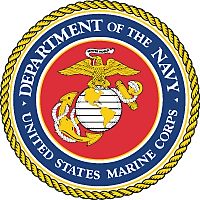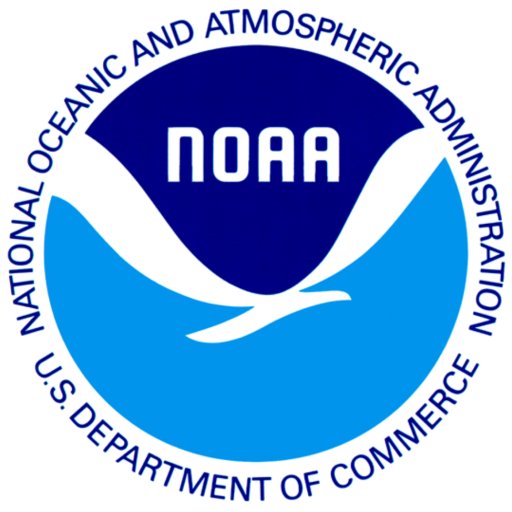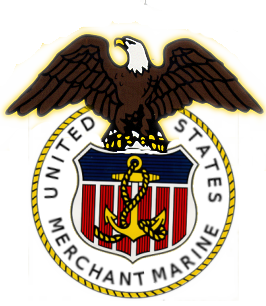
by Gilbert Beyer
This book is more of a scrapbook than it is a history. The idea for it came into being while sitting around over beers with a group of shipmates at a reunion of former Fiske sailors. The late Tom Clancy once wrote, "If it isn't written down it never happened." I started collecting these stories in 2010 and got the last one received into this edition. This is probably the last in the series. Too many of the people involved have passed, some never having told their stories. Today is a different world than it was after World War II and before 9/11 but we would do history an injustice if we failed to recognize its passing.
Email: ddr6063@gmail.com
Publisher: Independently published, 2024
Ordering Info: Amazon. See other works by this NOUS companion here.

by John Rodgaard
Obsolete, except for the experimental anti-submarine warfare sensor they carried, the USS Hammerberg, DE-1015, the USS Courtney, DE-1021 and the USS Lester, DE-1022 went to the Mediterranean to demonstrate the potential of a technology that relied on a passive towed array detection system; what the Navy officially designated as the Interim Towed Array Surveillance System (ITASS).
These 'Tailships' entered the Med in 1970. It was then that the US and NATO navies operated in a naval environment characterized by the most intense concentration of Soviet submarines and surface ships outside of Soviet home waters. The Mediterranean was the focal point in the great naval rivalry of the United States, with its NATO allies, against the Soviet Union's Voyenno-morskoi flot (Military Maritime Fleet).
When deployed as Tailships, these DEs proved so successful against Soviet submarines that the US Navy committed additional resources to refining the capability of passive towed array sonars. The development of the Towed Array Surveillance System (TASS), the Surveillance Towed Array Sonar System (SURTASS) and the Tactical Towed Array Sonar (TACTASS) deployable systems were direct follow-ons to ITASS.
The ships' deployment occurred during a time when the United States was torn apart by the war in Vietnam. Although far away, the effect of Vietnam on the ships' crews as well as the Sixth Fleet reflected the greater turmoil within the society they served. The turmoil was evident in the competition for resources to keep the ships steaming and in personnel tensions among the crews.
Additionally, the ships and men operated in a sea surrounded by increasing tensions in the Middle East. While stationed in Naples, Italy, the Palestinian Black September Organization created terror across Europe during the summer of 1972, with the massacre of the Israeli Olympic athletes in Munich, West Germany. That summer would see these sailors spending nights in Naples standing anti-terrorist watches with loaded weapons, whilst the pinging of an active sonar system would echo throughout the hulls of the moored ships. It was thought this would discourage swimmers wanting to plant explosive devices on ship hulls.
The objective of this book is simply to tell the story of these three ships and their men within the context of the greater events of the Cold War at sea in the Mediterranean; the successes and failures of operating in the Mediterranean, and life for those who called Naples their temporary home.
Email: john_rodgaard@yahoo.com
Publisher: Helion and Company, 2023
Ordering Info: Casemate
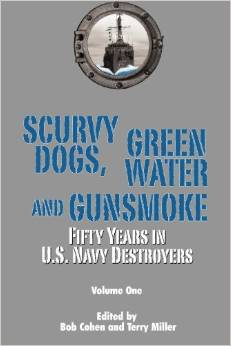
by Terry Miller, Editor
Eighteen members of the Secret Scurvy Dog Society writers group relate their own accounts, many humorous and some pointedly not, of life at sea on U.S. Navy destroyers during the Korean War, the Vietnam War, and the Cold War. Beginning with the question - Why the Navy? - and ending with reflections on how their experiences during hard lives at sea came to be considered cherished memories, these men, both officers and enlisted, tell the quintessential Sea Stories of the latter half of the 20th century. Scurvy Dogs, Green Water and Gunsmoke is the first joint effort for these writers, most of whom have been published previously in the Tin Can Sailor, the journal of the National Association of Destroyer Veterans.
Email: terrymiller@destroyers.org
Publisher: Oak Tree Press, 2008
Ordering Info: Amazon, Barnes & Noble, Tin Can Sailors, Inc., Oak Tree Press

by Bob Rositzke
Collection of stories about four major World War II naval campaigns and the Cold War. This video collection is part of a permanent display at the U.S. Naval Academy Museum. VHS 36:00.
Email: bobr@empirevideo.com
Publisher: Empire Video, Inc., 1998
Ordering Info: Call 703/866-1934. VISA/MC accepted. $15 (plus S& H)




by Gilbert Beyer
This book is more of a scrapbook than it is a history. The idea for it came into being while sitting around over beers with a group of shipmates at a reunion of former Fiske sailors. The late Tom Clancy once wrote, "If it isn't written down it never happened." I started collecting these stories in 2010 and got the last one received into this edition. This is probably the last in the series. Too many of the people involved have passed, some never having told their stories. Today is a different world than it was after World War II and before 9/11 but we would do history an injustice if we failed to recognize its passing.
Email: ddr6063@gmail.com
Publisher: Independently published, 2024
Ordering Info: Amazon. See other works by this NOUS companion here.
by John Rodgaard
Obsolete, except for the experimental anti-submarine warfare sensor they carried, the USS Hammerberg, DE-1015, the USS Courtney, DE-1021 and the USS Lester, DE-1022 went to the Mediterranean to demonstrate the potential of a technology that relied on a passive towed array detection system; what the Navy officially designated as the Interim Towed Array Surveillance System (ITASS).
These 'Tailships' entered the Med in 1970. It was then that the US and NATO navies operated in a naval environment characterized by the most intense concentration of Soviet submarines and surface ships outside of Soviet home waters. The Mediterranean was the focal point in the great naval rivalry of the United States, with its NATO allies, against the Soviet Union's Voyenno-morskoi flot (Military Maritime Fleet).
When deployed as Tailships, these DEs proved so successful against Soviet submarines that the US Navy committed additional resources to refining the capability of passive towed array sonars. The development of the Towed Array Surveillance System (TASS), the Surveillance Towed Array Sonar System (SURTASS) and the Tactical Towed Array Sonar (TACTASS) deployable systems were direct follow-ons to ITASS.
The ships' deployment occurred during a time when the United States was torn apart by the war in Vietnam. Although far away, the effect of Vietnam on the ships' crews as well as the Sixth Fleet reflected the greater turmoil within the society they served. The turmoil was evident in the competition for resources to keep the ships steaming and in personnel tensions among the crews.
Additionally, the ships and men operated in a sea surrounded by increasing tensions in the Middle East. While stationed in Naples, Italy, the Palestinian Black September Organization created terror across Europe during the summer of 1972, with the massacre of the Israeli Olympic athletes in Munich, West Germany. That summer would see these sailors spending nights in Naples standing anti-terrorist watches with loaded weapons, whilst the pinging of an active sonar system would echo throughout the hulls of the moored ships. It was thought this would discourage swimmers wanting to plant explosive devices on ship hulls.
The objective of this book is simply to tell the story of these three ships and their men within the context of the greater events of the Cold War at sea in the Mediterranean; the successes and failures of operating in the Mediterranean, and life for those who called Naples their temporary home.
Email: john_rodgaard@yahoo.com
Publisher: Helion and Company, 2023
Ordering Info: Casemate
by Terry Miller, Editor
Eighteen members of the Secret Scurvy Dog Society writers group relate their own accounts, many humorous and some pointedly not, of life at sea on U.S. Navy destroyers during the Korean War, the Vietnam War, and the Cold War. Beginning with the question - Why the Navy? - and ending with reflections on how their experiences during hard lives at sea came to be considered cherished memories, these men, both officers and enlisted, tell the quintessential Sea Stories of the latter half of the 20th century. Scurvy Dogs, Green Water and Gunsmoke is the first joint effort for these writers, most of whom have been published previously in the Tin Can Sailor, the journal of the National Association of Destroyer Veterans.
Email: terrymiller@destroyers.org
Publisher: Oak Tree Press, 2008
Ordering Info: Amazon, Barnes & Noble, Tin Can Sailors, Inc., Oak Tree Press
by Bob Rositzke
Collection of stories about four major World War II naval campaigns and the Cold War. This video collection is part of a permanent display at the U.S. Naval Academy Museum. VHS 36:00.
Email: bobr@empirevideo.com
Publisher: Empire Video, Inc., 1998
Ordering Info: Call 703/866-1934. VISA/MC accepted. $15 (plus S& H)
